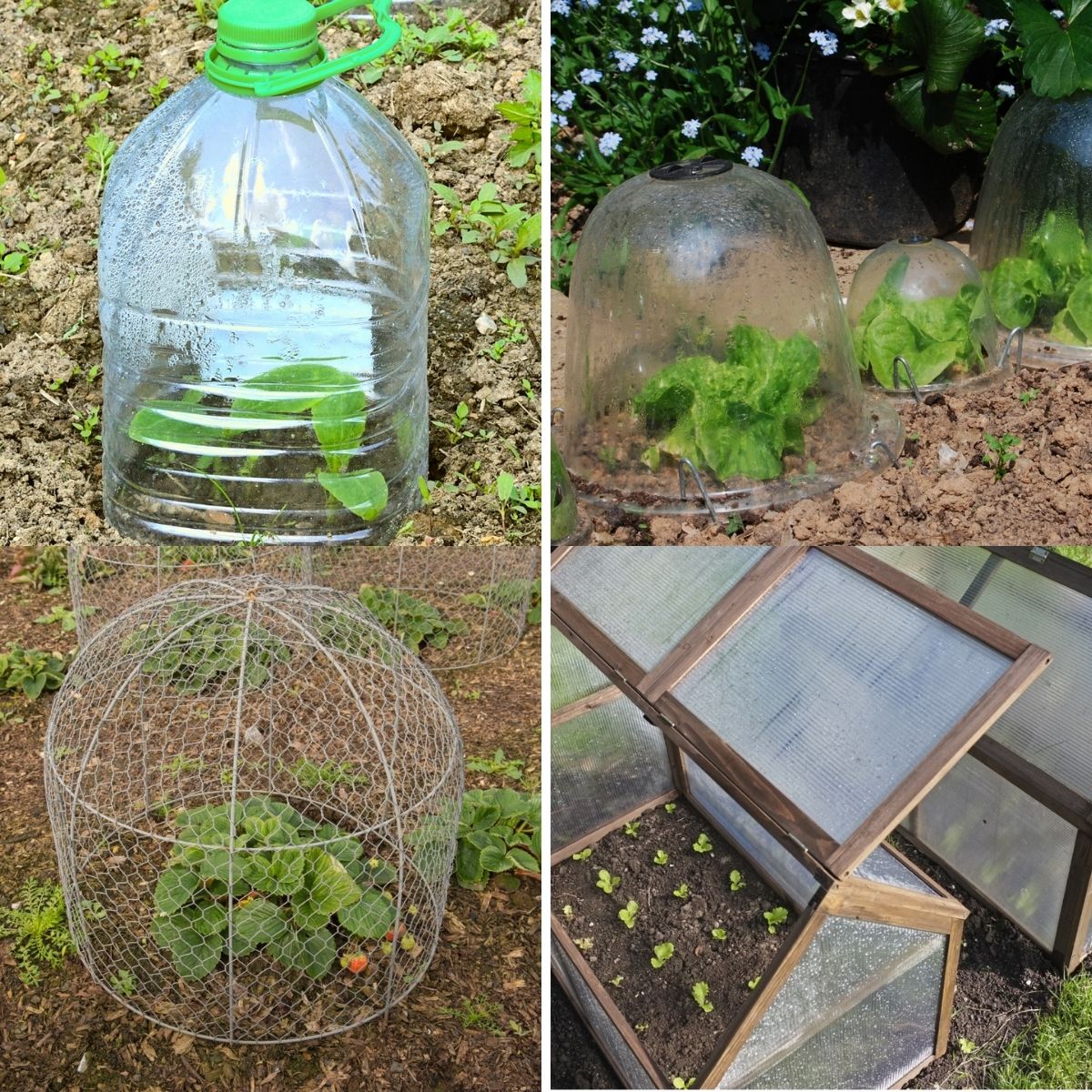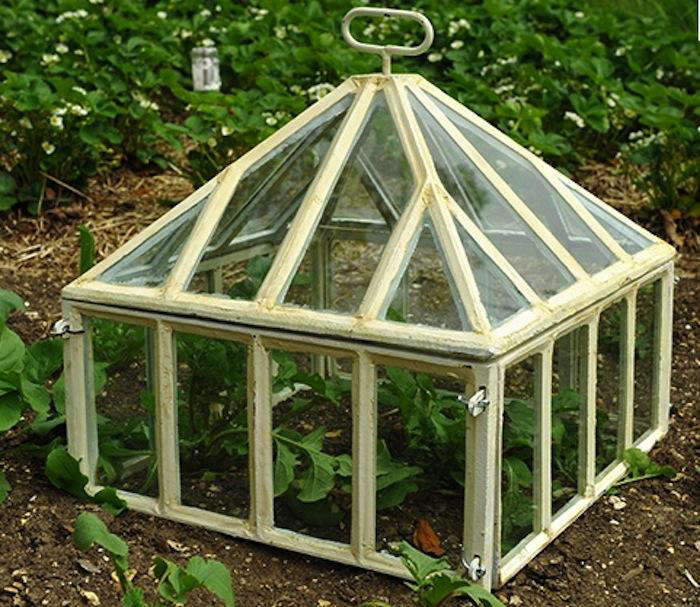To use a garden cloche, place it over tender plants to protect them from frost and promote growth in early spring. Garden cloches are a versatile tool that shields plants while allowing sunlight and water to reach them.

Credit: www.diyncrafts.com
By creating a mini greenhouse effect, the cloche acts as a temporary shelter for delicate seedlings, extending the growing season and encouraging earlier harvests. Additionally, the cloche helps to retain heat and moisture, preventing damage caused by extreme weather conditions.
With proper care and maintenance, garden cloches can greatly enhance plant growth and ensure successful gardening outcomes.
Factors To Consider When Selecting A Garden Cloche
Factors to consider when selecting a garden cloche include the size and shape of the cloche. The size should be appropriate for the plants you want to protect. The shape should suit the layout of your garden or the specific area where you want to place the cloche.
Material and durability are important considerations as well. Look for a cloche made of sturdy materials that can withstand different weather conditions. Ventilation options are crucial to ensure proper airflow for your plants. A cloche with adjustable vents or removable tops can provide the necessary ventilation.
Carefully reviewing these factors will help you choose the right garden cloche for your needs. So, be sure to think about size, shape, material, durability, and ventilation options before making your selection.
Understanding Proper Soil Preparation Techniques
Understanding proper soil preparation techniques is crucial when it comes to using garden cloche effectively. Clearing the garden bed is the first step in creating a suitable environment for your plants. Removing weeds and debris ensures that your plants have ample space to grow.
Adding organic matter, such as compost or well-rotted manure, helps improve soil fertility and structure. This promotes healthier plant growth and root development. Leveling the soil is another important aspect of soil preparation. By creating an even surface, you prevent water from pooling and ensure proper drainage.
This also helps with seed germination and even planting. Following these soil preparation techniques will optimize the benefits of using a garden cloche, providing the ideal conditions for your plants to thrive.
How to Use Garden Cloche : Step by Step Guide
Setting Up The Garden Cloche
Setting up the garden cloche involves carefully choosing an ideal location. Assembling the cloche is the next step, ensuring all parts fit together correctly. Preparing the ground is equally important before placing the cloche, guaranteeing favorable growing conditions. Additionally, clearing weeds and debris from the chosen area is essential.
The ground should be level and adequately tilled to allow easy installation. This will provide a stable foundation for the cloche and promote optimal plant growth. Lastly, ensuring the cloche receives sufficient sunlight and adequate ventilation is vital. Proximity to water sources and easy access for maintenance are also factors to consider.
By following these guidelines, you can effectively set up and utilize a garden cloche to enhance your gardening experience.
Extending The Growing Season With Garden Cloche
Extending the growing season with a garden cloche is a smart move for any gardener. These protective coverings shield delicate plants from frost damage, ensuring a longer harvest period. Garden cloches create a microclimate that offers protection against chilly temperatures and harsh weather conditions.
By trapping heat and humidity, they create an optimal environment for plant growth and development. With the help of a garden cloche, gardeners can manage temperature and humidity levels, providing the perfect conditions for their plants to thrive. With a garden cloche in place, plants can withstand frost and continue to grow, resulting in a more abundant and extended harvest.
It’s a simple and effective method for maximizing the growing season and reaping the rewards of a bountiful garden. So, don’t let frost limit your gardening endeavors – embrace the use of garden cloches and enjoy a longer and more successful growing season.
Protecting Plants From Pests And Diseases
Garden cloches are an excellent tool for protecting plants from pests and diseases. By using a garden cloche, you can effectively prevent insect infestations. These protective covers act as a shield, minimizing the risk of fungal infections that can harm your plants.
In addition, garden cloches serve as a barrier against harsh weather conditions, safeguarding your plants from extreme temperatures, heavy rain, or strong winds. With their simple design and easy application, garden cloches are a practical solution for keeping your plants healthy and thriving.
So, whether you have a small home garden or a large-scale farming operation, incorporating garden cloches into your plant care routine is a wise choice. Take advantage of the benefits they offer and see the difference in the overall health and yield of your plants.
Regular Cleaning And Sanitization
Regular cleaning and sanitization of garden cloche is essential for its effective use. Start by removing debris and weeds from the cloche to ensure proper air circulation. Disinfect the cloche regularly to prevent the growth of harmful pathogens. This can be done using a diluted bleach solution or a natural disinfectant.
After cleaning, store the cloche in a dry and well-ventilated area to avoid moisture build-up. It is also important to conduct routine maintenance, such as checking for any damages or cracks and replacing worn-out parts. By following these guidelines, you can prolong the lifespan of your garden cloche and ensure optimal growing conditions for your plants.
Monitoring And Adjusting Environmental Conditions
Monitoring and adjusting the environmental conditions in a garden cloche is crucial for successful plant growth. Controlling temperature and humidity is vital to provide an optimal growing environment. Proper ventilation management ensures adequate air circulation. Managing watering and irrigation schedules ensures that plants receive the necessary moisture for healthy development.
By regularly monitoring and adjusting these key factors, gardeners can create the ideal conditions for their plants to thrive. Whether you’re growing delicate flowers or vegetables, understanding how to use a garden cloche effectively will help you achieve the best possible results.
With these simple steps, you can maximize your gardening efforts and enjoy a bountiful harvest.
Frequently Asked Questions For How To Use Garden Cloche
How Do You Use A Plant Cloche?
A plant cloche is used by placing it over a plant to protect it from harsh weather and pests.
What Grows Well In A Cloche?
Plants that grow well in a cloche include lettuce, spinach, cilantro, radishes, and small seedlings.
How Do You Water Plants In A Cloche?
Water plants in a cloche by gently pouring water at the base of the plant. Avoid overwatering.
Are Cloches Good For Plants?
Yes, cloches are good for plants as they provide protection and create a favorable growing environment.
Conclusion
Garden cloches are a versatile and valuable tool for any avid gardener. They provide protection and create a controlled microclimate for plants, encouraging healthy growth and earlier harvests. By extending the growing season, garden cloches allow us to enjoy fresh produce for a longer period.
The simplicity and effectiveness of these devices make them a must-have for any garden. Whether you’re a beginner or an experienced gardener, using a garden cloche is a smart and practical choice. Remember to position your cloches properly, water and ventilate your plants regularly, and monitor the temperature inside the cloche to ensure optimal growing conditions.
With a garden cloche, you can experiment with different plants and enjoy the rewards of a thriving garden. Start using a garden cloche and witness the difference it can make in your garden!

